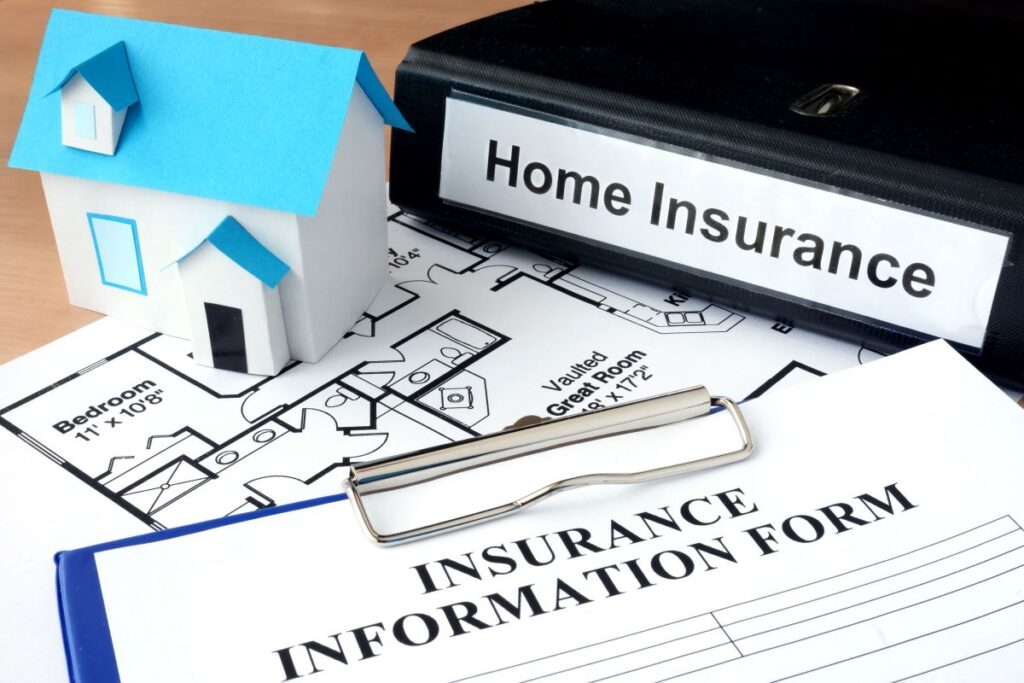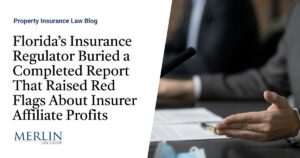Homeowners Insurance Endorsements – All You Need to Know

Homeowner’s insurance endorsements are extra coverages you can buy to protect yourself, financially.
Not every consumer needs endorsements. But some do, and it’s our goal at Einsurance.com to make sure everyone gets the right insurance for their situation. So, if you’re curious about homeowner’s insurance endorsements, or if you’re wondering about prices, keep reading.
We’ll begin with a basic explanation of typical homeowner’s coverage. Then we’ll offer definitions to make you more insurance-savvy and provide a list of popular endorsements.
This piece will also answer your most frequent questions like:
What is Usually Covered by a Homeowner Insurance Policy?
Most consumers buy an “HO-3” policy. This is the standard package offered by insurance companies. It’s built on the notion of fire coverage; and in short, it will pay you to rebuild a brand-new home and replace your belongings if your home is to burn down in a fire.
Most standard HO-3 policies will also cover damage caused by:
SmokeWindHailLightningRiots or civil unrestPlane crashesMalicious mischief (vandalism)
Some policies also cover mechanical breakdown, mold damage, and coverage for your solar equipment; but these are not included in every policy! Be sure to read your documents carefully.
Notice that a few serious issues are not covered by traditional homeowner’s insurance. Major regional catastrophes, like floods, earthquakes and nuclear war are not covered.
And, depending on your state, you might need to buy extra coverage for perils like tornadoes, hurricanes, mudslides and so on.
Know that flood is a common peril that is not covered by a standard HO policy, but you can buy additional flood coverage either as an endorsement, or as a separate policy.
Homeowner’s Insurance: Words to Know
When shopping for home insurance and endorsements, you should know some basic vocabulary.
Peril: The event or danger you are insured against.Premium: The payment you will make to an insurer.Endorsements: Also called “riders,” these are extra insurance coverages you may choose to buy.Named insured: The individual(s) in charge of a policy. This person/people can make changes to a policy, like buying endorsements in the middle of the contract.Policy limits: The amount of money an insurer will pay you for a loss.Replacement cost (RC): The amount of money it will cost to replace something with a brand newActual cash value (ACV): The amount of money an insurer will pay for a used/depreciated item.
Now, let us explore homeowner’s insurance endorsements in depth.
What is an Endorsement or Rider?
On your homeowner’s insurance, an endorsement is extra insurance you can buy for special items, perils not covered by your policy, or less common risks.
List of Homeowner’s Insurance Endorsements
Every home and family are unique. You might choose to buy an endorsement that covers expensive belongings or protect yourself from inflation in case of a total loss. Check out the list below to learn more.
Guaranteed Replacement Cost Coverage
Your home policy was written to replace your entire home and contents if it burns down. But, thanks to inflation and supply chain struggles, building supplies and labor expenses have skyrocketed in recent years.
Ask yourself this: If your home burns down, will you be able to clean out the property, replace your home and belongings completely with the amount of insurance you have? If your policy is older, you might not have enough funds.
A guaranteed replacement cost endorsement will help to pay for these increasing costs, regardless of your policy limits. If your policy is more than 10 years old, you should investigate this rider.
Now you are wondering, “How much does this endorsement cost?” Our research suggests your premiums will increase 5% to 10%, depending on your home valuation, state, and insurer.
Extended Replacement Cost Coverage
This homeowner’s insurance endorsement will boost your payout after a loss by a certain percentage. Depending on the insurer, that could be 10%, 25% or even 50%. Like the previous endorsement, it helps protect you against inflation.
The difference is that it has strict limits, and in our current economy, 10% might not be enough of a boost to make you whole after a loss.
Personal Property Replacement Cost Endorsements
This endorsement provides more coverage for your personal property, like the contents of a home and garage.
For instance, if your home were to suffer a partial loss, like a kitchen fire that causes smoke damage to your carpets, clothing and furniture, this homeowner’s insurance endorsement will help you buy brand new items.
Remember, replacement coverage will pay for brand new items. Actual cash value coverage will only pay for the loss of a depreciated or used item.
As with most riders, you will pay an additional premium to buy this coverage. It varies tremendously depending on the amount of coverage you need, your location, and your insurer.
Mechanical Breakdown Coverage
Imagine your rooftop air conditioner fails, and a bunch of water and coolant seep into your roof, attic and walls. Many home policies will cover the damage to the home, but few will replace the expensive AC unit. That’s because it wasn’t damaged by a covered peril, like a fire or lightning strike.
Mechanical breakdown insurance endorsements exist to cover expensive appliances and home items. They generally cover:
Furnaces and boilersPersonal computersHVAC systems, AC units and ductworkOvens and rangesRefrigerators and freezers
They may also cover food spoilage, which can happen when your deep freezer fails. (However, you should always consider your deductible amount and claims history before making a claim for a few hundred dollars in spoiled food.)
Ordinance or Law Coverage
Sometimes Ordinance or Law Coverage is built-in to an HO-3, but not always.
This homeowner’s insurance endorsement helps to pay for extra expenses needed to build a new home and make it code compliant.
For instance, in California, as of 2020 all new homes must have solar panels on the roof. According to Energysage.com, home solar arrays can easily cost $20,000 or more in the Sunshine State. And that can take a sizable chunk out of your insurance check after a total loss.
Ordinance and Law coverage would pay for that solar array because it’s required by law.
Again, you will pay a higher premium to add this coverage, and that price varies tremendously around the nation.
Flood Damage Endorsements
Flood damage riders are relatively new in the industry. Until a few years ago, most consumers could only buy flood insurance through the National Flood Insurance Program (NFIP), which is managed by FEMA.
In recent years, insurers have started to offer stand-alone flood policies and flood insurance riders. They exist to pay for damage caused by floods or moving water.
Flood insurance prices can vary quite a bit. Still, according to our research performed in mid-2024, the average flood policy in the US costs about $1,100 per year, or $90 monthly.
Now you’re wondering “Do I need flood insurance?” The answer varies. If your mortgagee — that is, the bank or individual to which you make your mortgage payment — requires one, then you need it. Many homeowners feel more comfortable with flood protection, even if it’s not needed in their note.
And finally, let’s discuss personal article floaters, a common homeowner’s insurance endorsement.
Personal Article Floaters, “PAFs” or “Floaters”
Personal Article Floaters are often called “floaters” or “PAFs.” They exist to protect high-value, individual items.
Suppose you own a $90,000 Patek Phillipe wristwatch, or a genuine Picasso painting. You’ll want more insurance on these items. They can either be scheduled onto your homeowner’s insurance policy as an endorsement, or a separate policy can be bought.
Do I need “floaters?”
Most consumers don’t have those sorts of items in the home, but you may still want a floater if you have:
Expensive musical instruments or recording equipmentA roof full of high-end gaming computersA $20,000 engagement ringRare antiquesExpensive artwork or sculpturesAnd other expensive items that could get lost, damaged or stolen.
The cost for PAFs varies tremendously. When creating your quote, underwriters — the risk calculation experts who work for insurance companies — will consider:
The actual cash value and replacement costs of an itemThe likelihood an item will be stolen or lostHow an item will be stored (in a safe or bank deposit box)Certificates, appraisals or provenance that prove authenticity
Then, the underwriter will select a suitable premium. As a rule of thumb, expect to pay at least $100 per year for every $10,000 worth of insurance. A $20,000 bridal set could cost $20 / month to insure, at minimum.
Are PAFs worth it? As licensed insurance agents, we’ve noticed that many consumers feel the premium prices for “floaters” are high. But we ask you to consider it from the insurer’s perspective. It’s very easy to lose (or claim to have lost) an expensive diamond ring, and insurers must foot the bill for these expensive claims.
Now that we’ve covered a list of popular homeowner’s insurance adjustments, let’s talk about how to find out which coverages you have, and which you may need.
How to Learn More About Your Homeowner’s Insurance Endorsements
Your best resources for learning about your current HO policy are the contract itself, and a licensed agent. But there are more ways to learn about homeowner’s insurance endorsements.
We suggest you:
Read your entire policy closely, and review it a few times a yearCall or visit a trusted insurance agent, ask them questions about your policy functionsContact the insurance company via the internet or a toll free number
If there’s something on your policy that doesn’t make sense, or if you see an unusual exclusion, you should reach out to a licensed professional.
That leads nicely into our next section, on exclusions.
What are Exclusions on an Insurance Policy?
Exclusions are used by insurers to specify points and perils they will not cover. For instance, if you have several large dogs, they may exclude dog bites from your liability coverage. If that were to happen, you wouldn’t be able to call on your insurer to help pay for a dog bite incident.
Some common exclusions are:
Mold and mold damageMudslidesTornadoesEarth movement (both earthquakes or mudslides)SinkholesDamage caused by vermin, like termites, mice or ratsAnd intentional damages done by a resident
Sometimes, a homeowner can buy a rider/endorsement to cover one or more of these points. Sometimes, they’ll need to buy a separate policy. And there are a few perils we all face that are nearly impossible to insure against. Nuclear hazards and nuclear war are prime examples.
And should you have home solar arrays, you should pay close attention to your homeowner’s insurance policy.
On Home Solar Arrays, Exclusions and Endorsements
Insurance has been around since the Code of Hammurabi, written circa 1,750 BCE. And the first known insurance contract was written 700 years ago. Since then, insurance companies have stockpiled a ton of data, which they share with one another.
Home solar arrays are, therefore, relatively new to insurers. They’re also expensive and delicate, which means many property insurers are reluctant to insure them.
If you own your solar arrays outright — in other words, you paid for them in full, and they don’t belong to a solar company or power company — you can talk to your insurance agent about coverage for your solar panels and batteries.
You’ll probably need a homeowner’s insurance endorsement to cover them.
If the solar panels, batteries, inverters and so on belong to another entity — meaning you lease them, make payments to a leinholder, or they belong to the power company — your insurance company might not be able to insure them at all.
Try Our Online Quoting Tools
Your home policy can protect you from many financial terrors, but not all of them. If you need more insurance, would like specific endorsements, or if you would like to save money on your home policy, try our handy online quoting tool. Our goal is to connect consumers with the right kind of insurance for every need, and we look forward to helping you.




